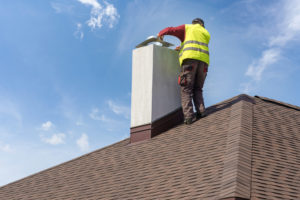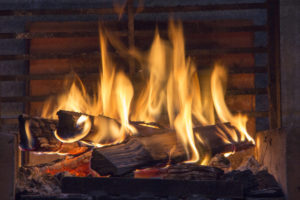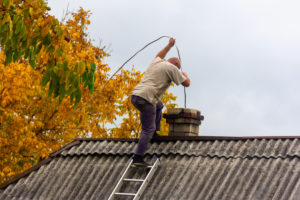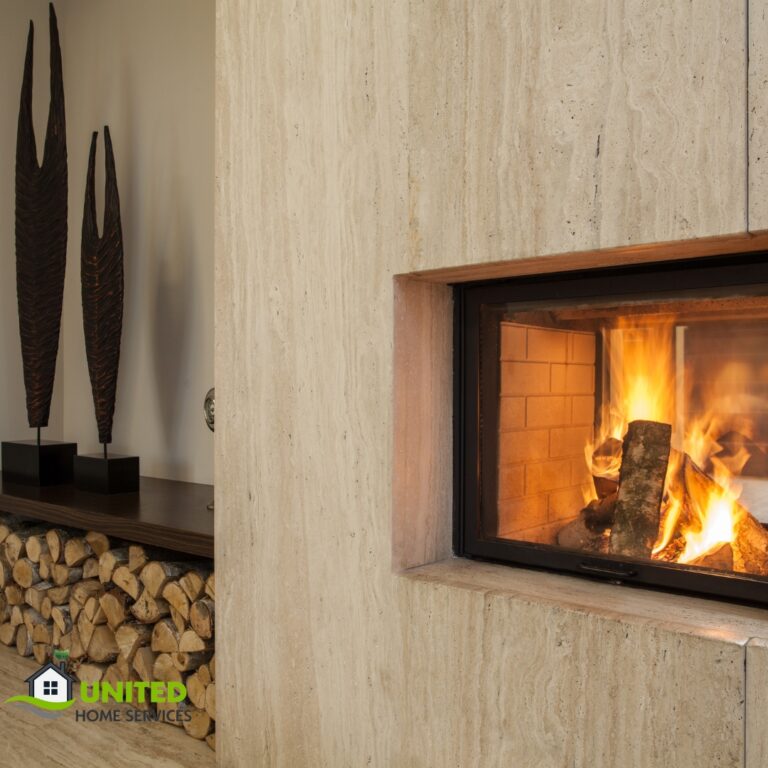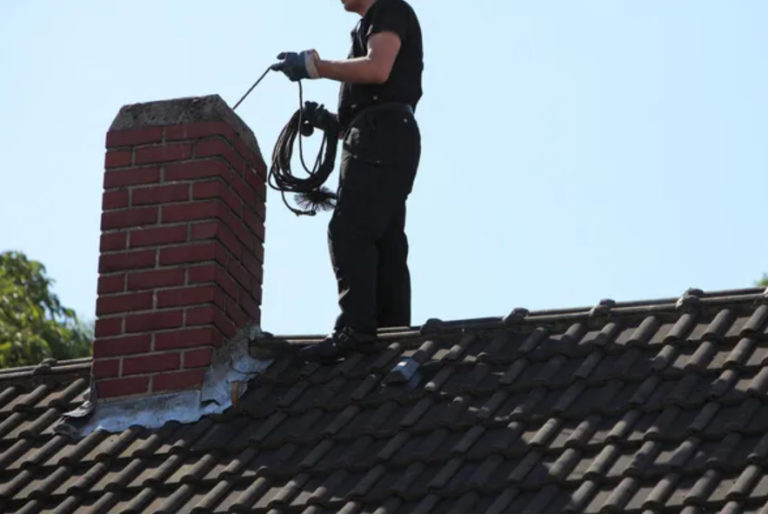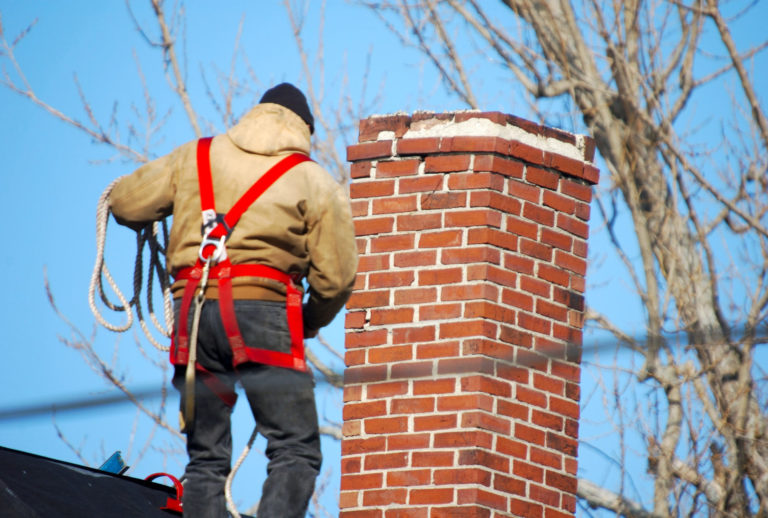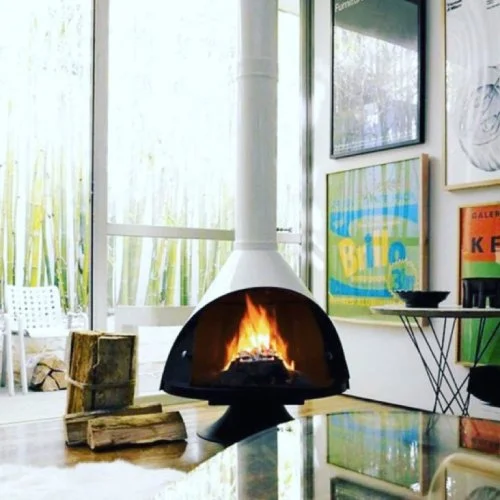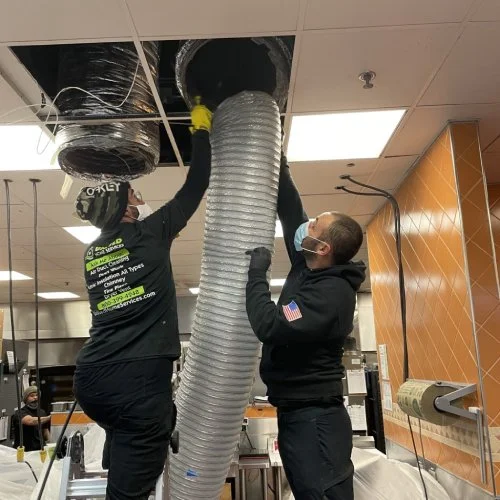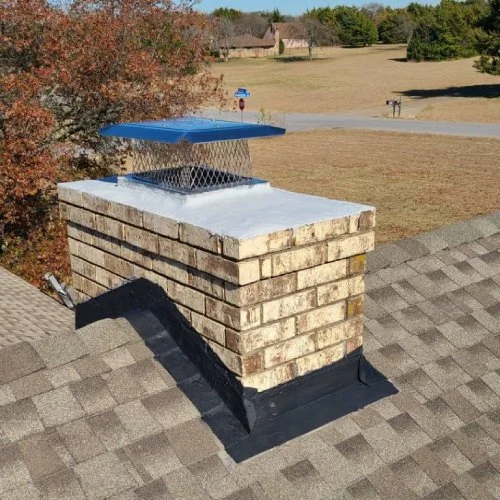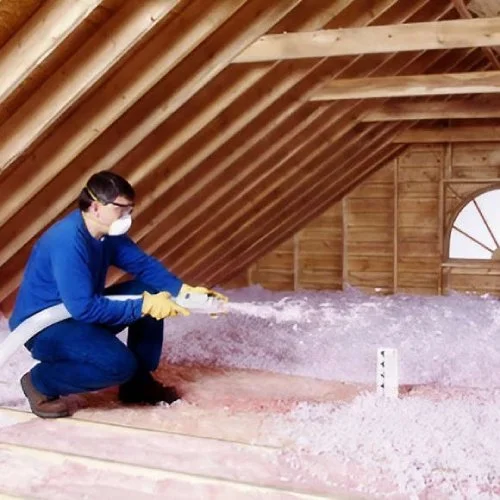If you have a fireplace in your home, you know all about the comforts of a roaring hearth in winter. For many homeowners, the fireplace is the centerpiece of the living room and good chimney performance is what will keep your family comfortable all year round.
But in order to function as it should, a fireplace and chimney need to be well maintained. After all, the buildup of creosote and soot or the presence of pests can cause problems in your home. Or a flue that doesn’t quite open can lead to backdrafts that can be a safety and health hazard. Fortunately, there are a few things every homeowner can do to ensure optimal fireplace and chimney performance.
If you’ve been experiencing issues with your fireplace, it may be time to reach out to the experts for a “chimney sweeping service near you“. The professional team at United Home Services can ensure your fireplace is in good condition and will produce the best, brightest fire around!
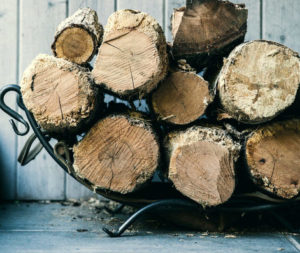
Choose the Right Wood for Chimney Performance
If you’re a novice to the world of fireplaces, it might seem like any wood will do the trick. However, the right wood is one of the most important parts of instantly improving your fireplace and chimney performance. It’s also necessary for maintaining fireplace safety.
When choosing the right firewood, there are a few key things you should look for:
Opt for Seasoned Wood
It’s common to think that wood is dry if it hasn’t been soaked by the rain in the last few days. However, the process of actually ‘drying’ wood takes much longer. While softwoods like pine can take about one year to dry, hardwoods like oak can take up to two years. For the best chimney performance, it’s very important to choose the wood that is dry to the touch and has cracks in the bark. It should have loose bark that’s beginning to split and be golden brown in color.
Pick the Right Type
Seasoned wood is necessary for a fire that provides minimal smoke and more heat, but the right kind of wood is also important. That’s why it’s a good idea to know the burning capacities of each type of wood. For an indoor fireplace, dense woods like oak and maple tend to be best. While ash burns pretty well, softwoods like poplar burn fast and don’t make for a long-lasting fire. Lovely as pine and spruce trees are, these woods are best not burned inside as they contribute to the buildup of creosote, a very damaging substance for your chimney and fireplace!
Avoid Treated Woods
Oak and maple may be great for a burning fire, but there are a number of types of woods you should definitely avoid. Any wood that has been pressure-treated, painted, stained, or manufactured should be avoided. Unfortunately, these types of wood can release toxic gases so may pose a risk to your fireplace and your family.
Keep Your Chimney and Fireplace Dry
Wood that hasn’t been properly dried is not ideal for your fireplace. It’s also the case though that a fireplace and chimney that aren’t dry will have a negative impact on your chimney performance! Extreme weather like rain and snow can pummel your roof and chimney and lead to leaks. That’s why it’s so important to have an effective chimney cap that seals your home against the elements.
A quality chimney cap or chase cover will be able to stop water from entering the chimney flue. You can even choose one that covers the entire area so that water damage will be prevented all over. Whatever type of cap or cover you have, it’s important that it’s damage-free and properly sized so it can truly protect your chimney.
When it’s time for your chimney inspection, be sure the chimney cover is checked for the proper slope and thickness. Ensure there are no cracks appearing on this part. If you’re dealing with a chase cover, make sure it’s properly fitted and showing no signs of rusting or damage.
Flashing is another important element that keeps your chimney dry. Be sure to call in certified professionals to ensure it’s installed correctly and free of rust and erosion.
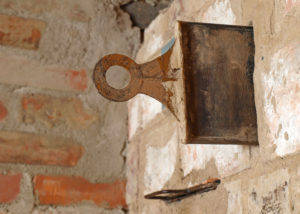
Open the Chimney Damper, Completely
Besides seasoned wood, one of the most important elements of any fire is oxygen. This is what will enable your fire to burn effectively, and it’s why it’s very important that your damper is fully opened.
There are two main types of dampers that are used in fireplaces and chimneys, a throat damper and a top-mount damper. A throat damper is located at the chimney’s base and is a flap commonly made of steel or iron. To open it, you can usually pull a knob or handle. A top-mount damper is located at the top of the chimney to guard your chimney against animals and pests.
The buildup of creosote or other substances in your chimney can mean that the damper isn’t able to open or close as it should. By investing in chimney sweeping consistently, you can ensure that issues like this one don’t impact your chimney’s performance.
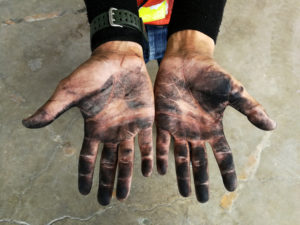
Prevent Creosote Buildup
Creosote is a black or brown substance that builds up along your chimney and fireplace as you burn fires. And while it does naturally occur, this substance is highly flammable and can be a danger as it accumulates. Fortunately, there are a few things you can do to prevent buildup:
- Build the Right-Sized Fire – A fire that’s too big for your fireplace will produce more creosote buildup. Instead of overdoing it, be sure to build a fire that’s the right size for your fireplace to enhance chimney performance. Doing this will ensure smoke moves through your chimney instead of building up and producing creosote.
- Follow the Instructions – It’s important to follow the instructions for your fireplace to ensure the best (and safest!) fire possible. By using your fireplace as it’s designed, you’ll be able to minimize issues with creosote buildup and excess soot, creating a fire that burns slowly and efficiently.
- Upgrade Your Fireplace – It’s often the case with older fireplaces that more creosote is created as you burn a fire. Because these older fireplaces are less efficient, they can pose a greater safety risk than newer models. If you’re experiencing issues with starting a good fire and creosote buildup, it may be time to invest in a new fireplace installation.
Prime Your Fire for Chimney Performance
A great way to really optimize your fireplace and chimney performance is to get it warmed up. Much like exercise, a little bit of preparation beforehand can make all the difference!
In order to warm the air in your fireplace, try rolling a few sheets of newspaper and lighting them on fire. Hold the lit newspapers at the base of your chimney so you are effectively pushing warm air through the chimney. This will function to push the cool air out of your fireplace and chimney.
This simple trick means your fire will start more quickly since it won’t be fighting cold air from the get-go!
Set Up Your Fire
It may seem like you can throw any old logs into the fire in any way and have the most high-performing fire. However, there is an art to creating the kind of fire that’s going to last longer and burn efficiently.
If you have a fire basket, you’ll want to start by putting a rug of newspapers under it so the entire fireplace will catch fire. From here, you will want to add a heap of small pieces of wood at the center of the grate that is loosely packed. This will ensure airflow so your fire gets the oxygen it needs to thrive.
From here, place a few logs on top of these pieces that will catch fire once the newspaper and the smaller wood pieces have started to burn. As your fire begins to die down through the night, you can add a couple of logs to it to keep it going. Be sure to use tongs or a log roller to move any new logs into position and improve chimney performance.
By following these steps, you’ll have a fire that burns at maximum efficiency, providing heat and minimal smoke for a warming winter experience.
Clean Your Chimney Consistently
One of the most important aspects of getting a good fire is regular chimney services. Fires create ash, soot, and creosote, and the buildup of these things spells bad news for your fireplace’s safety and burning capacity.
To ensure your fire is cleaned, clear away ash after you have a fire. Keep in mind that there should be less than an inch of ash buildup so that your fire is not giving off excess smoke. It’s important to be aware that you should still leave a little as this will help your next fire to ignite more readily.
You can also clean off soot stains with some simple homemade remedies. Create a mixture of baking soda, cream of tartar, and water, and apply it to the soot for 10 minutes. You can also try a mixture of white vinegar and water or even over cleaner. Once you’ve waited, scrub the area, and then rinse it.
Fireplace and chimney performance is all about completing maintenance in a timely, effective manner!
Schedule an Annual Chimney Inspection
As a homeowner, there are plenty of things you can do to optimize chimney performance. However, when it comes to a chimney inspection, you’ll need to call in the professionals.
A chimney inspection should be completed once a year to ensure your chimney and fireplace are hazard-free for your family. This ensures that your chimney, fireplace, and vents will be inspected consistently and any issues with performance can be discovered and rectified.
A professional chimney sweeper can clear creosote and soot, and ensure there are no blockages in your chimney. They’ll have the specialized equipment to fix any issues and the expertise to ensure that nothing is missed that may pose a problem for your fireplace.
Chimney Performance Is All About Maintenance!
There’s nothing like a glowing hearth on a winter’s day to make your family feel safe and comfortable at home. But it’s easy to forget that a lot of little things go into making an ideal fireplace experience. It’s not just about lighting a match and letting the warmth begin.
In order to get the best fire, it’s important to have the right wood and a primed chimney. But one of the most important aspects of getting a good fire is proper cleaning and consistent chimney sweeping.
A chimney sweeping expert will be able to clear away any creosote buildup and ensure your fireplace and chimney performance are top-notch. This means you won’t have to deal with less-than-optimal fires or hazards that can impact the enjoyment of your fireplace.
Have you been putting off your annual chimney and fireplace inspection? Be sure to contact the professionals at United Home Services who will be happy to help!
- Chimney Sweep in Addison, TX
- Chimney Sweep in Allen, TX
- Chimney Sweep in Anna, TX
- Chimney Sweep in Arlington, TX
- Chimney Sweep in Balch Springs, TX
- Chimney Sweep in Bedford, TX
- Chimney Sweep in Benbrook, TX
- Chimney Sweep in Blue Mound, TX
- Chimney Sweep in Blue Ridge, TX
- Chimney Sweep in Carrollton, TX
- Chimney Sweep in Cedar Hill, TX
- Chimney Sweep in Colleyville, TX
- Chimney Sweep in Copeville, TX
- Chimney Sweep in Coppell, TX
- Chimney Sweep in Crowley, TX
- Chimney Sweep in Dallas, TX
- Chimney Sweep in Dalworthington Gardens, TX
- Chimney Sweep in DeSoto, TX
- Chimney Sweep in Duncanville, TX
- Chimney Sweep in Euless, TX
- Chimney Sweep in Everman, TX
- Chimney Sweep in Fairview, TX
- Chimney Sweep in Farmers Branch, TX
- Chimney Sweep in Farmersville, TX
- Chimney Sweep in Forest Hill, TX
- Chimney Sweep in Fort Worth, TX
- Chimney Sweep in Frisco, TX
- Chimney Sweep in Garland, TX
- Chimney Sweep in Glenn Heights, TX
- Chimney Sweep in Grand Prairie, TX
- Chimney Sweep in Grapevine, TX
- Chimney Sweep in Haltom City, TX
- Chimney Sweep in Haslet, TX
- Chimney Sweep in Hurst, TX
- Chimney Sweep in Hutchins, TX
- Chimney Sweep in Irving, TX
- Chimney Sweep in Josephine, TX
- Chimney Sweep in Justin, TX
- Chimney Sweep in Keller, TX
- Chimney Sweep in Kennedale, TX
- Chimney Sweep in Lancaster, TX
- Chimney Sweep in Mansfield, TX
- Chimney Sweep in McKinney, TX
- Chimney Sweep in Melissa, TX
- Chimney Sweep in Mesquite, TX
- Chimney Sweep in Murphy, TX
- Chimney Sweep in North Richland Hills, TX
- Chimney Sweep in Plano, TX
- Chimney Sweep in Princeton, TX
- Chimney Sweep in Prosper, TX
- Chimney Sweep in Red Oak, TX
- Chimney Sweep in Rendon, TX
- Chimney Sweep in Richardson, TX
- Chimney Sweep in Rowlett, TX
- Chimney Sweep in Sachse, TX
- Chimney Sweep in Saginaw, TX
- Chimney Sweep in Southlake, TX
- Chimney Sweep in University Park, TX
- Chimney Sweep in Watauga, TX
- Chimney Sweep in White Settlement, TX
- Chimney Sweep in Wylie, TX

